For the first time in nearly three decades, I found myself without a job, and not by design, but by the complex drift of circumstance. I’m fortunate, though; years of corporate negotiation means I am a damn fine negotiator, so I’d secured myself a financial buffer. Time, for the first time in a very long time, was mine to spend. I did what I’ve always done best: I threw caution (and a few familial responsibilities) to the wind and booked a solo trip. Only this time, I brought my sister Jil along for the ride.
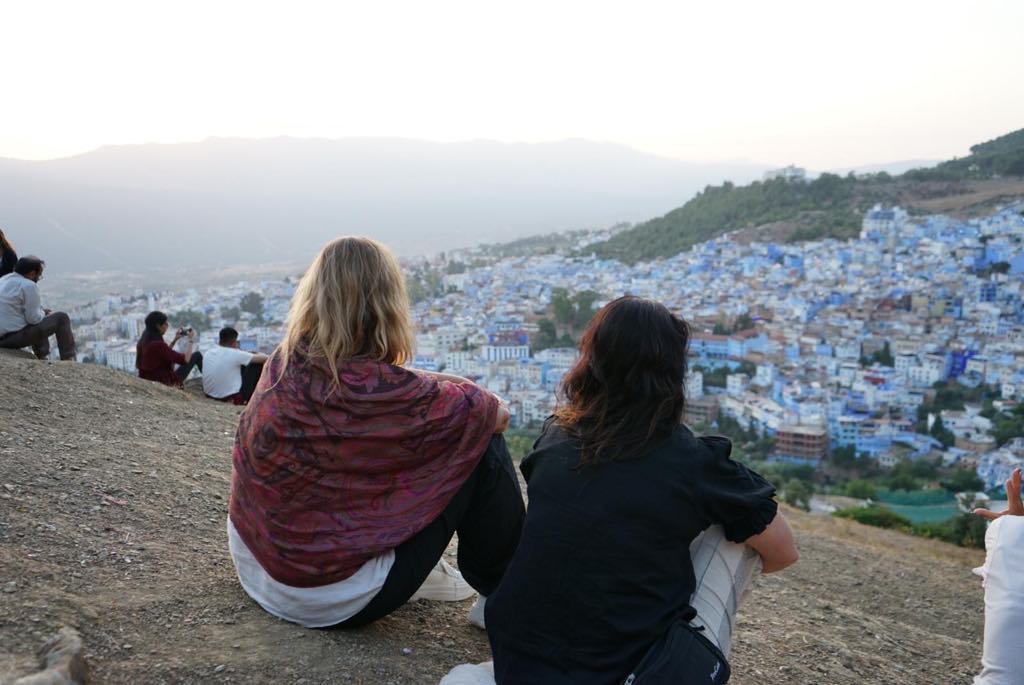
It was a toss-up: two weeks chasing gallery openings in New York or four weeks across Morocco, including two on a bike with a dozen women we’d never met. The decision was instinctive. Morocco won.
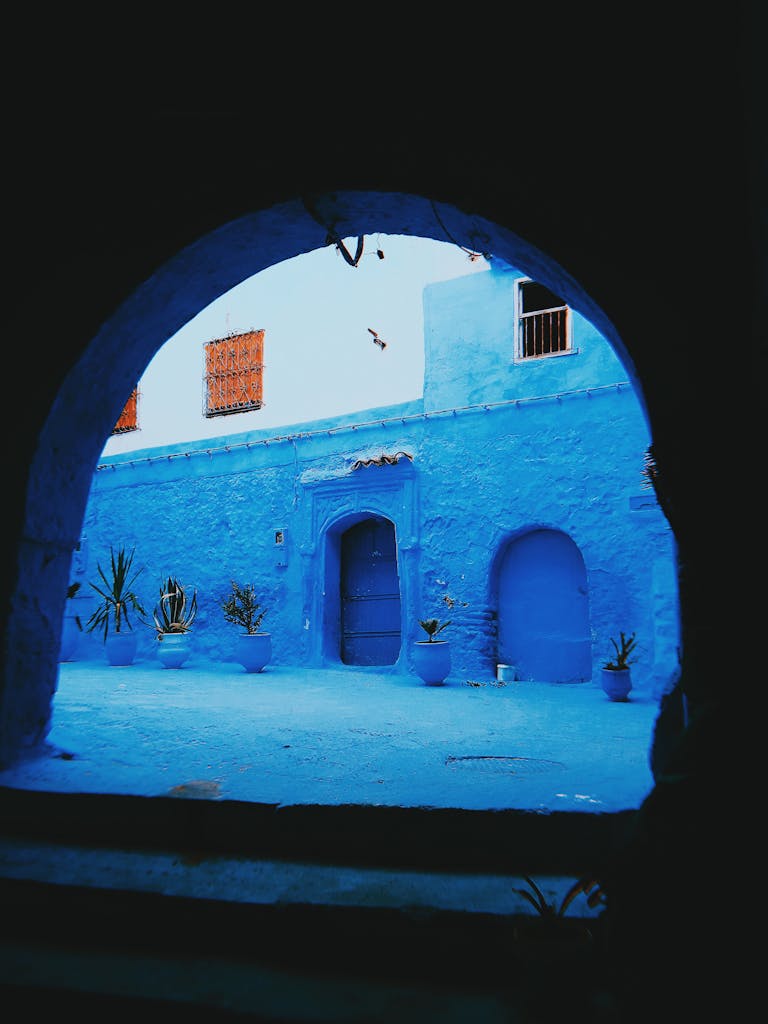
There’s something rudimental about moving through a place on two wheels. You feel it deep in your soul: the smell of the earth, the weight of the sun, the grit in your teeth on the incline, and especially the freedom that comes from the wind in your face on a screaming downhill run. There’s a lot to learn about a country by ticking off landmarks, but to really get to know a place, I need to experience the movement, the rhythm, and to watch the landscape unfold when I’m in it, not just looking at it.

We rode from the Mediterranean Sea to the Sahara, from ancient cities to switchback summits; somewhat shy to start, we quickly navigated the big personalities and the tricky egos that come into play when strong, incredible women first meet, breaking it down into laughter and tears and a more raw kind of strength that only reveals itself when the sweat really starts to run.
Our journey began in Essaouira, Jil and I visited the windswept port city softened by the Atlantic, for a few days, just to breathe. Its old medina, now a UNESCO heritage-listed city, was once a series of towering forts built in the 18th century to protect its port from pirates. As a major trade port, the architecture is a blend of Moroccan, Portuguese, French, and Jewish influences. There is a cat at every turn; they’re all very regal, very fat and happy, and the seagulls are as big as a small dog. Any bad juju we brought with us slowly dissipates with each exhale.
After four days, we left the West Coast and hit the sensory rush of Marrakech and the women we’d be spending the next 12 days with. Our first ride, 25 chaotic kilometres through the city, was a crash course in surrender, and it bonded us fast. That night we boarded an overnight train for Tangier and thanks to our new Canadian buddies, commenced our ongoing obsession with Canadian Maple Cream Cookies.
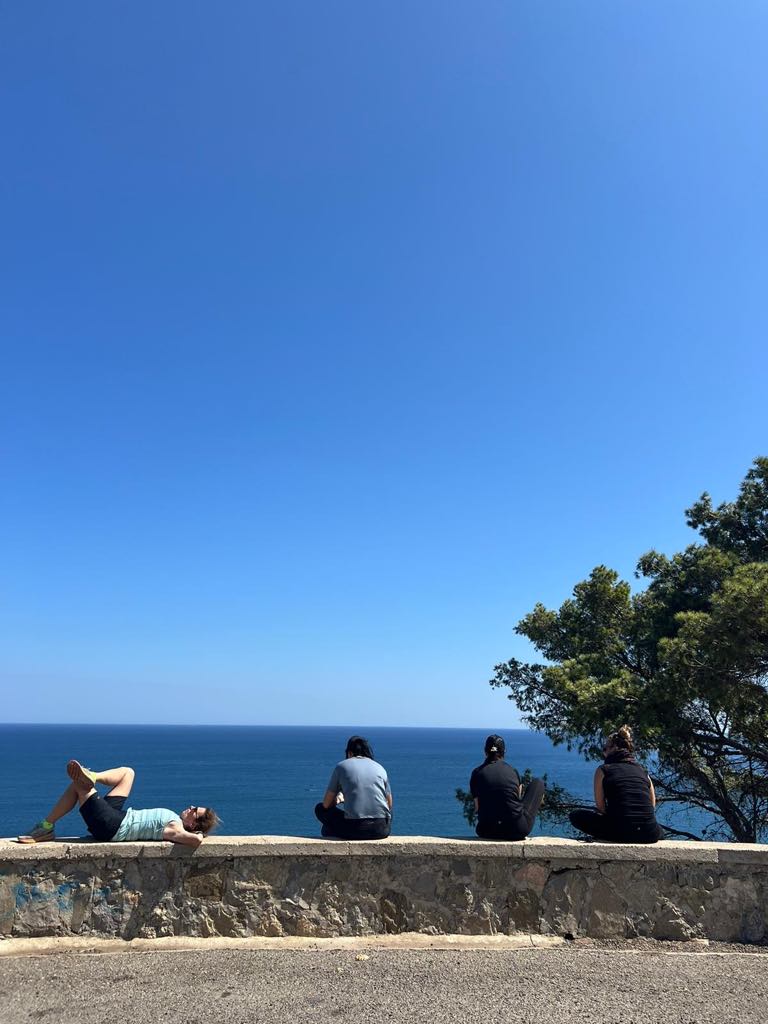
On the bikes, Tangier got the heart pumping early. 35 kilometres of stunning views along a spectacular coastline, who knew you could see across the Med to Gibraltar? We rounded out the day with a cold beer (we half knew it would be our last; we learnt to love mint tea) by a warm pool and the most stunning call to prayer. Regardless of faith, I love the call to prayer. Wherever we were, it would rise five times a day, and every time it did, I stopped, not out of obligation, but as an opportunity to be present in a moment of quiet reflection. Of course, in the larger cities, it was formal and urgent, but as we moved through the smaller villages, the call to prayer started to feel more personal, a lot more real, local and alive.
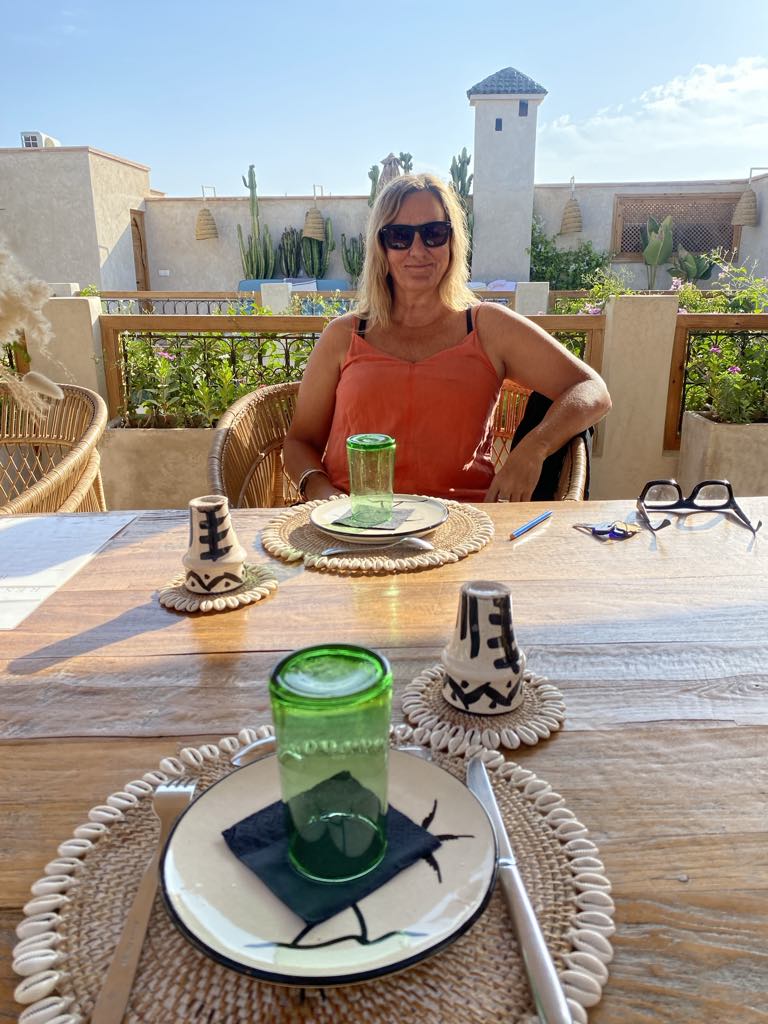
Leaving Tangier, we had one 50k day that got away, our first in the rolling Moroccan mountains when the van we were in blew a gasket or dropped its gearbox or something equally disastrous and completely totalled our trailer through a fence, destroyed every bike and every spare on board, our support car barely missing a fuel truck doing 160k down a North African freeway. No one was hurt. We hitched back to the coast for a stunning, fully clothed swim in the med and fresh fish by sea, hot-footing it to Chefchoun for sunset with a story we’ll be telling our grandkids.

It was a glorious day to be alive. Chefchoun is the Blue City of Morocco, nestled in the Northwest, and our springboard for another 50k day back in the saddle, grinding through the Rif Mountains. It was hot, steep, and the air was thick with the scent of Morocco’s infamous “Green Oil.” We rested at roadside cafés, rode through fields of wild cannabis, and pushed through punishing hills that gave us a heat rash and belly laughs in equal measure.
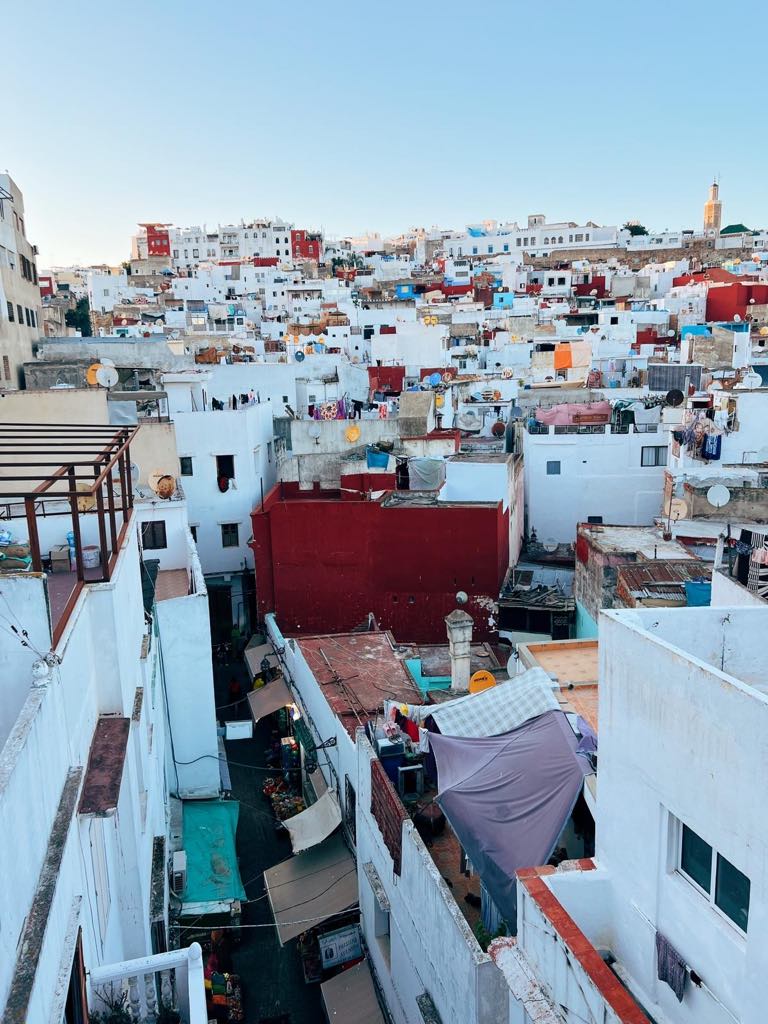
By the time we reached Fes, we were sunburnt and spent. Fes is home to the world’s oldest university, founded in the 9th century by a woman. That kind of legacy mattered to us. I am woman hear me roar. It anchored the ride that followed: 60km through the Middle Atlas, past apple farms, cool pine forests, Berber Villages and a Ski Field. Ski fields in North Africa, another great surprise.
We had a broken chain, A wild dog chase (that we won), and a brutal headwind that we all took on in silent determination. Sometimes strength is in the quiet and unstoppable; we put our heads down, and we didn’t stop.
Our days took us from the Mid Atlas to Merzouga. I spent my Fifty Second birthday doing 70km an hour downhill to the Ziz River. We hit Merzouga by sunset and celebrated my shared birthday with a fellow traveller (a mad Kiwi) under Saharan stars with drumming and dancing, singing and cake, and a real joy that makes strangers feel like family.
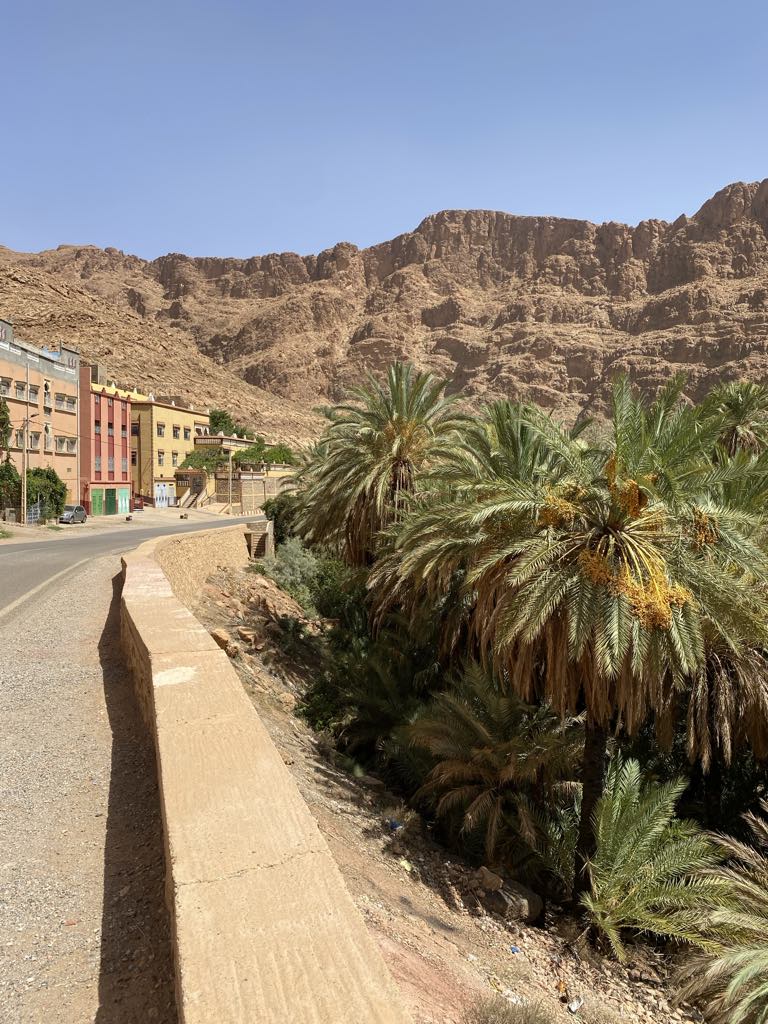
The days that followed took us through Todra and Dades Gorges, the Morocco of our dreams, with all its date palms and bougainvillea, dusty pinks, browns, and greens. We rode fast and laughed a lot. We stopped to meet locals, walked through 700-year-old gardens, and found ourselves in awe of the Moroccan women who had carved lives from rock, dust, and memory.

I’ll admit I had little interest in seeing the “Hollywood of Morocco.” Film sets and movie trivia felt far removed from the kind of break I was craving. But once we arrived at Atlas Studios, just outside Ait Benhaddou, I was glad we had come. There’s something disarming about the pride Moroccans have in their region’s role as a cinematic backdrop. From Gladiator to Game of Thrones, the stories filmed here borrow from landscapes that need no filter. Seeing the real-life sets against the sweep of the desert brought a new appreciation, not just for film, but for the way Morocco plays itself so well on screen; it was Lawrence of Arabia, shot in 1962, that first put Morocco on the cinematic map.
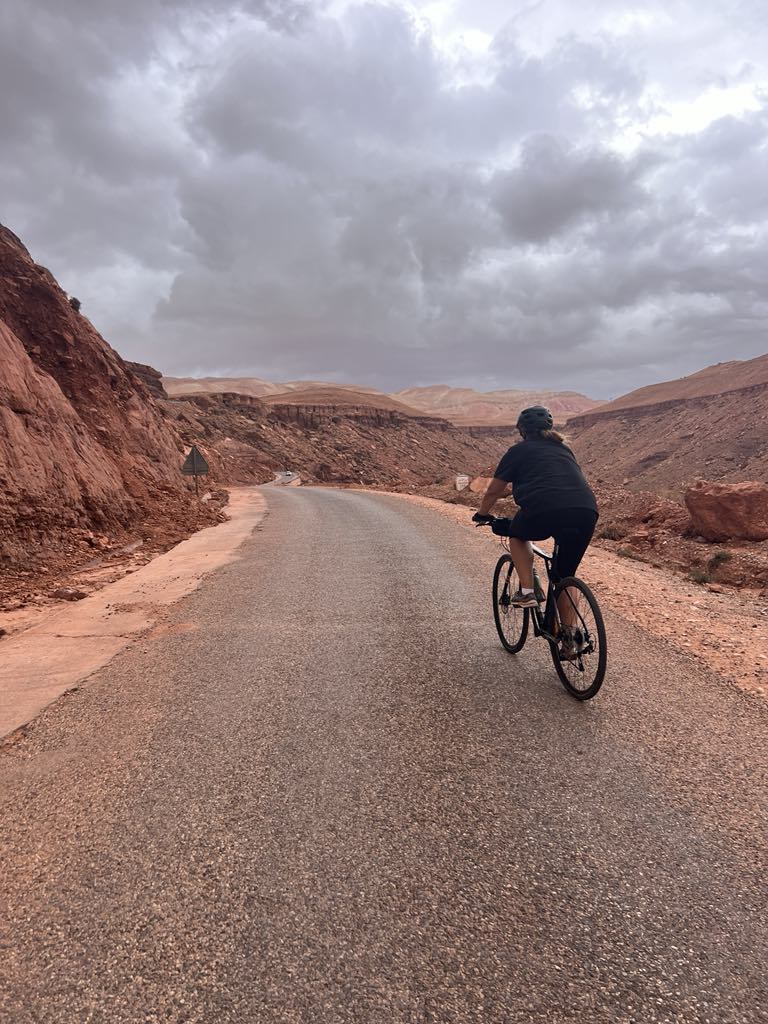
The highest pass in North Africa, Tizi n’Tichka, tested us all. At 2,260 metres above sea level, with switchbacks that just would not stop switching back, it was a climb none of us will forget. There wasn’t much talking, just a long, slow burn in the thighs and an unspoken togetherness that said: We’ve got you.
At the top, it was a solid mix of laughter and tears. Our bike trip was done. Jil and I couldn’t ditch our trusty steeds fast enough. Six stars awaited. We took off for Riad Lallabaya in the heart of the Marrakech medina for six nights of R&R.
We rode with a Proust-loving professor, an artist who painted her way through every rest stop, and a newly widowed grandmother rediscovering her own strength. There was a fiercely hilarious American and her Canadian neighbour, navigating self and identity against the backdrop of impending political chaos in America, a quiet but crazy Kiwi with legs like pistons that powered up every mountain. There was one woman who bought her husband (yes, really). He had a rough start, but he was a decent bloke and quickly grew comfortable being invisible.
Back at Lalllabaya, we shared slow mornings over breakfast with a woman who had been coming to Morocco for years. A Queenslander, she is a screenwriter, academic, and artist of repute; she has an ease about her that can only come from moving through the world on your own terms. Her generosity in sharing her Morocco and her deep affection for the country added a richness to our final days, a reminder that (not so) solo travel isn’t just about where you go; it’s about who you get the privilege of crossing paths with.

So, if you’re feeling the tug of change, the itch of restlessness, or the quiet hum of possibility, I say this: take the trip. Don’t wait for perfect timing. Pack the bag. Find a bike and ride it. Sometimes, the road to finding joy isn’t a straight line; it’s a gruelling switchback in the Atlas Mountains, with a headwind in your face and all the right strangers beside you.